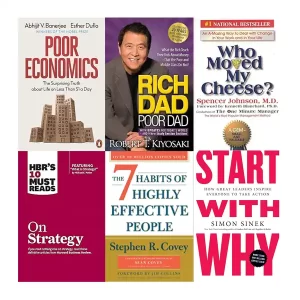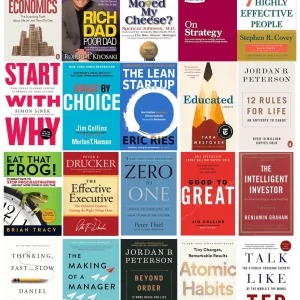Why American Automakers Are Failing In China
Video Transcript
Subscribe To Big Money Just four decades ago, private car ownership was unheard of in China. For most people. In a country where private cars still don’t exist, the journey to work is still by flying pigeon bicycle. And there was almost no auto industry in the country, but now it is the largest auto market in the world by far. Some of the biggest beneficiaries of this meteoric rise were foreign automakers, including American ones. They made piles of money. But the good times have come to an end and their future in the country is seriously threatened. Detroit is under pressure in China, and for the same reasons they’re losing in China, they could very easily lose globally. Lured by the promise of access to a burgeoning market of at the time, more than 1 billion people, global automakers agreed to strict trade rules and taught inexperienced Chinese partners a lot about making cars. For a long time, it was worth it. Foreign companies enjoyed prestige and popularity, but Chinese firms caught up fast to the point that foreign firms are now being pushed out. The new market isn’t quite like the state owned industry, one might imagine. Many top firms are privately owned. There are fewer restrictions. It’s highly competitive. New models can come to market in a fraction of the time it takes automakers elsewhere in the world, and always at lower prices. Increasingly, Chinese consumers prefer to buy Chinese brands, and the CEOs who run these companies have close and direct relationships with their customers. It’s unlikely that once they’ve once you’ve been dethroned, that you’ll regain any any power in the market. Despite the daunting circumstances, some say foreign firms, including American ones, need to double down. If you don’t compete in China, then what are you going to do when China shows up in your backyard? How do you know how to compete with them? You haven’t even tried. China’s automotive industry dates back to the early 1980s. Two Chinese automakers formed joint ventures with foreign manufacturers, one with an American firm, another with a German one. The industry was tiny at the time. The first vehicle, the Volkswagen Santana, sold 7500 units and dominated the market. The only vehicle buyers were government institutions and the like. Concept of a family car or a private car? It wasn’t. Nobody was even allowed to buy cars. But reforms in the 80s and 90s opened the floodgates and created the 21st century auto market recognizable today. In 1994, one of China’s top planning commissions issued the policy for the Automotive Industry, also known as the 1994 Auto Policy. This rule allowed foreign automakers to take up to a 50% share. In a joint venture with any Chinese auto manufacturer. Foreign firms could start no more than two joint ventures for any single type of vehicle. Later rules favored foreign automakers capable of producing cars that met global quality standards from locally sourced parts. General Motors, the biggest automaker in the world at the time, entered China in 1997, partnering with Shanghai Automotive Industry Corporation. As China’s economy liberalized and grew, so did auto sales. Demand pretty much tripled in the 1990s, and throughout 2000 2001, China finished its negotiations to enter the WTO, and that gave more security and reliability predictability to foreign automakers and China really took off. Sales grew ten fold in less than ten years, and China became the world’s largest car market that year. Gm used to be the poster child for an awesome US-China relationship. At one point, the CEO from GM China told me, Here in China, we’re making more money than God. Things are great. Chinese people love our Buicks. We’re bringing Cadillac soon, and it looked like there was going to be a forever annuity for the big three GM, Ford and Jeep in China. But that didn’t go as planned. A quick look at the market share of international auto manufacturers in China illustrates how rapidly things have changed. Gm sales in China have fallen from that high water mark consistently since 2017. In 2023, they fell to 2.1 million lower than their US sales for the first time since 2009. Equity income from the country GM’s metric for how much it earns in its second largest market fell 34% in 2023 to $446 million. It fell 54% during the fourth quarter alone. Things have been downhill and accelerating downhill, so much so that GM sales are down by more than 50%, Ford’s down by more than 60%, and Jeep has actually gone bankrupt in China and had to get out. So in the last five, six years we’ve seen just a. Disastrous, you know, outcome for the Detroit three. It’s very abrupt. It’s very sudden. But I think it shows the the maturity, basically of these Chinese competitors. So here is how it happened. First, Chinese cars improved by a lot. When Chinese firms first started exporting, and they started to soon as the Koreans did 30 years earlier, they didn’t have the requisite quality. They failed miserably in many crash tests, particularly in Europe. And the internet was full of pictures of Chinese cars crumpling like tinfoil. 510 years later. They have extremely good results in crash tests and you don’t hear a word about it. A lot of that. Improvement was thanks to what Chinese automakers learned from foreign partners. The whole point of the joint ventures was to bring them up to speed, to make sure that, uh, Chang’an that far, that Shanghai all could come up to a to a point where they could compete with basically their partners and everybody else if they hadn’t seen that coming, that’s on them. But Bill Russo, a former Chrysler executive who now runs a consulting firm in Shanghai, sees it somewhat differently. Cross border investments made by Chinese investors and some non-Chinese ones, were perhaps even more important than joint ventures in creating globally competitive brands. Nanjing Automobile Group bought the legendary British brand MG in 2005, and began making cars in 2007. Geely bought Volvo from Ford in 2010 for $1.8 billion, and then spun out the Polestar performance line as a standalone EV brand. Geely also bought British sports car maker Lotus. In 2017, American investor Warren Buffett took a stake in BYD, although he has since reduced it. Some leading brands are privately owned and didn’t grow out of joint ventures. Government support, of course, played a crucial role. The country knew it needed some kind of edge on incumbents. It bet big on EVs, spending an estimated ¥200 billion, which comes out to about 27 billion American dollars. Byd received over $3.6 billion in direct subsidies between 2018 and 2022, most of it in that last year. Partly this was to combat China’s intolerable air quality problems. Decades of industrial development had left cities like Beijing with some of the worst air pollution in the world. But the decision was also economic. The Chinese felt that they had a hard time competing with the Western, and especially Japanese companies with internal combustion engines, because it would be hard to catch up. So they decided they would leapfrog and go into electric vehicles. And this is an area in which nobody was proficient. In 2008, at the height of the financial crisis, the Chinese government made massive investments in transportation worth about $586 billion, including investments in a nationwide high speed railway system, airports and critically, highways. The following year came tax cuts on smaller cars and incentives on vehicle sales in rural areas. A new policy outlined eight goals for the next two years. The plan grow car production and sales and fund research on EVs, plug ins, hybrids and fuel cell vehicles. Those investments have given China a considerable leg up. A lot of the supplier base, including critical materials, is local. Chinese firms are really leading the world in battery development and battery battery production. And there’s a tendency in the US, again, to think of this as all a matter of subsidies or cheap labor or lousy environmental controls, and all those things have some role to play and particularly played a role in the past. But it underestimates the degree to which Chinese dominance is based on technical capacity. Strengths go beyond batteries and motors. Chinese firms have become quite strong in software and infotainment systems, a benefit of the country’s rise in the mobile phone and electronics industries. Volkswagen, for example, had big problems with the software trying to hold together its EVs, and they’ve looked to China to help solve that. And I think that’s a really important part of the story that you don’t hear much about. Recent entrants with backgrounds in the technology industry include Li Auto, Xpeng, Nio, Xiaomi, Huawei, Baidu, Tencent and Alibaba. A little bit like Tesla, they’re new. They don’t have the burden of history. They don’t have old factories to or not so many old factories to reconfigure, and they have a very fast pace of development. These companies view the car as a technology platform for the distribution of services and the continual collection of service revenue, rather than a thing that is simply sold once and then forgotten. The concept of the car as a rolling smartphone or computer is already normal in China. China’s younger buyer base prefers the highly connected products Chinese firms are selling. They now are often saying that the Americans and the and the Europeans produce cars that have inferior software and don’t use the latest chip, and are not as much on the cutting edge. The image many non-Chinese may have of the Chinese economy is one where the central government controls these large state owned enterprises. That’s partly true, but there’s a lot of nuance. Three of China’s major automakers are controlled by the central government in Beijing, but most of them are owned by provincial or municipal governments. A few are completely private. It’s not all operating perfectly according to market principles, but if you look at the number of producers and the number of models, it is by far the most competitive market in the world. You know, they probably will surprise a lot of people, especially given this year’s, um, bloodbath. Right. Of pricing pressure, economic headwind, trying to push these vehicles out into the marketplace at lower prices, sacrificing profitability for volume. And so the foreign automakers, they have to look at this and they have to balance, do I want market share or do I want profitability? The bloodbath Lei Xing is speaking of is the price war Tesla started in 2023. It began in China, but for years, an incredibly cutthroat environment has dramatically accelerated the pace of vehicle development in the country compared to other parts of the world. Normally, a car company might refresh or update a vehicle every 2 to 3 years and then make a significant generational change every 5 or 6. In China, a refresh can happen within 12 months, and the company will sell it at a lower price than the outgoing model. And this is where kind of foreign automakers, because of that legacy, they can’t keep up. In addition, Elon Musk is not the only CEO who talks to customers on social media. Chinese CEOs do, too, through China’s major platforms such as Weibo and TikTok. They also solicit comment through the apps customers use to interact with and maintain their cars. This creates tight feedback loops. Michael Dunn, who for decades has been studying the auto industry in China and its neighbors, says politics are also to blame. We look back at 2017. It was a year in which GM and South Korea signed this agreement to supply South Korea with anti-missile defense, um, facilities, important ones. China didn’t like that. And since then, we’ve seen the sales and market share of both the Detroit three and the Korean automakers just nosedive. No one made an announcement and said, hey, you guys are in trouble. You’re going to be shoved out of the market. But it’s pretty clear that 2017 was a time in which the tide turned, and the usefulness of the Detroit three just sort of began to fade as far as the Chinese were concerned. At the same time, a lot of the rules the Chinese government once had in place, like requiring joint ventures, have since been rolled back or removed entirely. The Chinese themselves learned. They grew strong enough. So no, there’s no more production needed. Let’s just have people compete. Let’s have the market open up. I don’t want to sound overly dramatic, I just want to be realistic when I say that within the next five years, Ford, GM, Hyundai, Kia, Nissan more likely than not, will be out of China. Some automakers, such as Volkswagen, the first foreign firm in the country, are trying to retrench and stay in the game. They are working with local firms and trying to move faster from decision to execution. Tesla might be in better shape than its Detroit rivals, at least for now. It was the first foreign automaker to be able to set up shop in China without a joint venture, thanks to the liberalization of trade policies. Just over one out of every two Teslas sold in the world is made in China. But even leaders face daunting odds. In my 27 years of living and working in China, what I’ve seen is a consistent pattern. That is, China. Invites in world class companies learns as quickly as they can the secret superpowers of those companies. And then gradually and, you know, almost methodically sees them to the exit door. And so Tesla one day will also meet this fate. You can bank on it. Russo, the former Chrysler executive, hopes US firms will not back out of the country and instead invest more in local design, development and production. My fear is most of the the global auto makers have delayed the investment in EV because they don’t see Americans embracing the electric vehicle. He thinks foreign firms can still compete in the market and maybe even chalk up some wins. Stay in the game in the next 3 to 5 years. Don’t give up, right? Invest and find some way to introduce those products, maybe even build them in China. If you can’t find scale in the United States, and then you at least have the hedge on the possibility of competing with China as they go global.US Financial News
US Financial News delivers good insights and news about investing, particularly regarding wealth generation in the metal, real estate, and cryptocurrency markets.
- Understanding Market Trends in Metal Investing
- Evaluating the Long-Term Potential of Real Estate Investments
- Identifying Key Indicators for Profitable Cryptocurrency Trades
- Diversification Strategies for a Balanced Investment Portfolio
- Analyzing the Impact of Global Economic Events on Metal Prices
- Exploring Emerging Real Estate Markets for Investment Opportunities
- Managing Risks in the Volatile World of Cryptocurrencies
- Leveraging Technology for Smarter Investment Decisions
- Comparing Traditional Investments with Modern Alternatives
- Building Wealth through Sustainable Real Estate Practices
- Predicting Future Trends in the Cryptocurrency Market
- Understanding the Tax Implications of Metal Investments
- Navigating the Complexities of Real Estate Crowdfunding
- Creating a Long-Term Investment Plan with Cryptocurrencies
- Assessing the Environmental Impact of Metal Mining on Investments
- Finding Reliable Sources for Real Estate Market News
- Staying Updated on Regulatory Changes in the Cryptocurrency Industry
- Understanding the Role of Blockchain Technology in Metal Trading
- Evaluating the Pros and Cons of Different Real Estate Investment Models
- Developing a Strategic Approach to Multi-Asset Investing
We try to help individuals navigate the complexities of investing in metals, real estate, and cryptocurrencies.
Thank you for being a part of our amazing community.
We can’t wait to see you shine finanically!
#BigMoneyInvesting #big #money #investing #lifestyle #investors
Support Big Money Investing Sponsors
-
Book Sets, Books, How Big Money Investors Think About Money, How To Think Like A Big Money Millionaire
Big Money Financial Investment Management Book Set
$85.44 – $177.66Select options This product has multiple variants. The options may be chosen on the product pageQuick View -
Books, How To Think Like A Big Money Millionaire, Top Level Communication Skills
How to Talk to Anyone by Leil Lowndes 92 Little Tricks for Big Success in Relationships
Original price was: $18.24.$12.89Current price is: $12.89.Select options This product has multiple variants. The options may be chosen on the product pageQuick View -
Books, How To Think Like A Big Money Millionaire
Poor Economics By Abhijit V.Banerjee
Original price was: $18.09.$12.14Current price is: $12.14. -
Book Sets, Books, How Big Money Investors Think About Money, How To Think Like A Big Money Millionaire, Spiritual, Wealth Creation
7 Book Set – Master Your Time – Master Your Beliefs – Master Your Destiny – Master Your Thinking – Master Your Emotions – Master Your Motivation – Master Your Focus By Thibaut Meurisse
Original price was: $93.43.$67.33Current price is: $67.33.










Leave a Reply